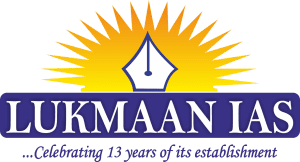THE CONTEXT: The WHO is negotiating the Pandemic Agreement, a treaty aimed at addressing COVID-19 failures and strengthening global defenses. It emphasizes equitable access to medical products and the sharing of pathogens and genetic codes. The agreement faces challenges, including financing, IP rights, and access to genetic sequence data. Enforcement is crucial, as the International Health Regulations have been insufficient in preventing travel or trade restrictions during the pandemic.
ISSUES:
- Equity and Access: The Agreement emphasizes equitable access to medical products, aiming to address the inequities seen during the COVID-19 pandemic, such as vaccine nationalism and lack of preparedness in countries. It proposes mechanisms like the WHO Pathogen Access and Benefit-Sharing (PABS) System to ensure equitable access to benefits derived from research, including vaccines.
- Contentious Debates and Disagreements: There are significant disagreements between developing and developed countries, particularly regarding financing, intellectual property (IP) rights, and the modalities of negotiations. Developed countries have criticized the revised negotiating text, referring to it as a ‘step backward’, while developing countries emphasize the importance of clarity on obligations and responsibilities to operationalize equity within the Agreement.
- Global System for Sharing Pathogens: A major point of contention is the establishment of a global system for sharing pathogens and their genetic codes while ensuring equitable access to the benefits derived from research. Developing countries are hesitant to share information without guaranteed returns, leading to the proposal of the PABS System, which aims to establish legal obligations on benefits-sharing.
- Enforcement and Accountability: The challenge of global governance, enforcement, and accountability is a significant sticking point. Without adequate accountability and enforcement mechanisms, the Agreement risks being ineffective. Proposals include establishing a decision-making body comprising the Conference of Parties (COP) and a secretariat, but consensus on this structure remains uncertain.
- Intellectual Property Waivers: Another contentious issue is the requirement for firms that received public financing to waive or reduce their intellectual property royalties. This is crucial for facilitating technology transfer and ensuring access to medical countermeasures, but it faces opposition from developed countries and the pharmaceutical industry.
- Risk of a Watered-Down Agreement: There is a risk that the Agreement could be watered down to secure consensus, particularly around contentious issues such as IP waivers. The language in the current draft is seen as potentially too weak, referring to national circumstances and using best endeavor language.
THE WAY FORWARD:
- Resolving Contentious Debates: Diplomatic efforts and negotiations must continue to bridge the gap between the positions of developed and developing countries, especially on issues like financing and IP rights. A consensus-building approach that respects the concerns of all parties could help in reaching an agreement that is acceptable to all.
- Enforcement and Accountability Mechanisms: The Agreement could include robust enforcement and accountability mechanisms to ensure that countries adhere to their commitments. This could involve regular reporting, peer reviews, or even sanctions for non-compliance.
- Intellectual Property Waivers: The contentious issue of IP waivers for firms that received public financing could be addressed by creating a framework that allows for temporary waivers during pandemics, ensuring that technology transfer and access to medical countermeasures are not hindered.
- Strengthening International Health Regulations: Alongside the Pandemic Agreement, the International Health Regulations could be amended to prevent unjust travel or trade restrictions and hoarding of vaccines and other medical countermeasures during pandemics.
- Partial Solutions and Small Wins: Recognizing that perfect solutions do not exist for complex global health challenges, the Agreement could focus on achieving partial or small wins that incrementally address the issues and build towards more comprehensive solutions over time.
- Public-Private Partnerships: Encouraging partnerships between governments, international organizations, and the private sector could facilitate the sharing of resources, knowledge, and expertise, which is crucial for pandemic preparedness and response.
THE CONCLUSION:
Negotiators are approaching the May World Health Assembly to approve the WHO Pandemic Agreement. The agreement is vital in rebuilding trust and coordination between nations to combat future pandemics. However, a watered-down or failed agreement is possible. The world cannot afford to be unprepared for the next global health emergency; success requires a meaningful, enforceable agreement prioritizing equity and global governance.
UPSC PAST YEAR QUESTION:
Q.1 Critically examine the role of WHO in providing global health security during the Covid-19 pandemic. 2020
MAINS PRACTICE QUESTION:
Q.1 Examine the role of international agreements and treaties in managing global health crises, with a specific focus on the proposed WHO Pandemic Agreement. Discuss the challenges and opportunities presented by such agreements in ensuring equitable access to healthcare resources worldwide.
SOURCE:
https://www.thehindu.com/opinion/lead/the-countdown-to-a-pandemic-treaty/article68003170.ece
Spread the Word
